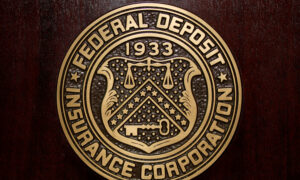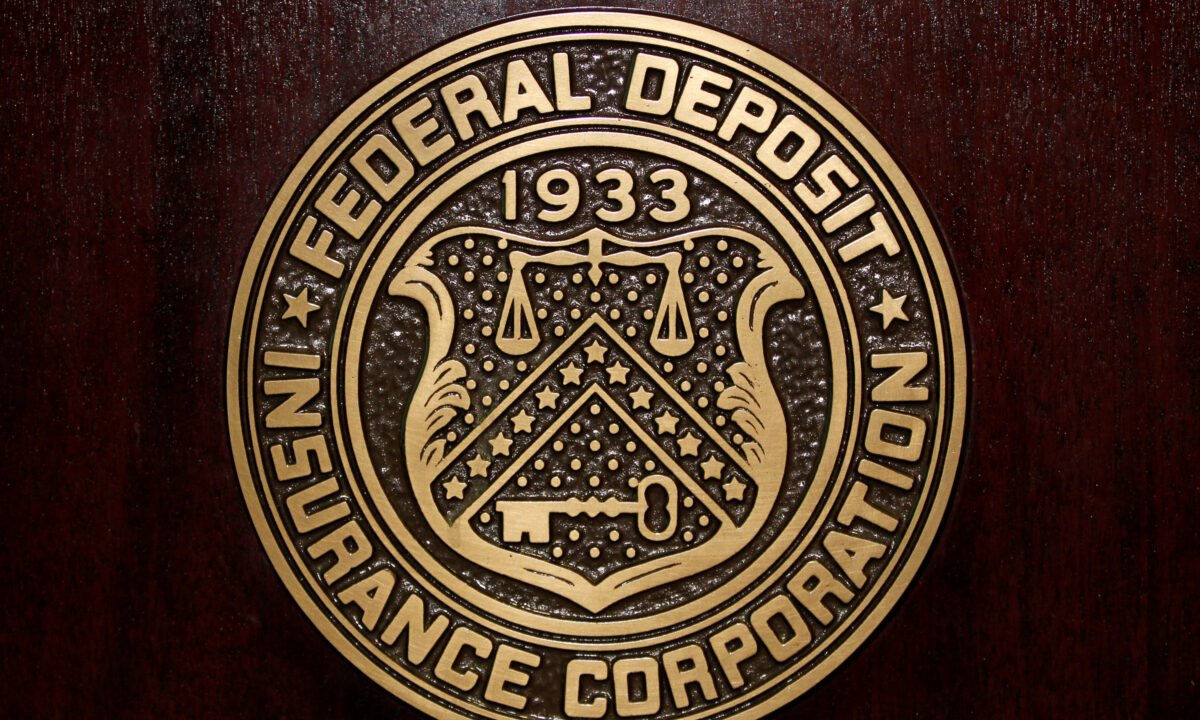America’s Banking Regulators Have Failed

Here’s some things that can be done to improve regulation overall.
Commentary
March 28 hearings on bank regulation exposed the shortfall of federal regulation. The hearings came in the wake of the Silicon Valley Bank (SVB) failure and the stresses on other banks, like Signature and Republic. To put it frankly, the hearings exposed our regulators appear to be virtually useless.
Among things we learned last week:
- We’ve long known the Federal Reserve (the Fed) assesses risk to certain large banks as part of its regulatory duties. But it emerged last week that the Fed’s risk assessments took no account of the breakneck speed at which interest rates were rising. It turned out this was the SVB’s biggest risk. SVB had invested its deposits in long-term bonds, but as rates rose, bond values declined and SVB suffered unrealized losses on its bond portfolio. Ordinarily, since the bonds were intended to be held to maturity, that would not be a problem; the bonds would pay off 100 percent of their face value at maturity. The losses were unrealized; that is, “on paper.” But depositor demands for withdrawals forced SVB to sell off those bonds, causing the “unrealized” bond losses to be “realized.” SVB’s liabilities—the amounts it owed its depositors—exceeded its assets (i.e., the bonds that had declined in value), causing the bank to become insolvent.
- According to Michael S. Barr, the Fed’s Vice-Chair for Supervision, the Fed knew SVB was at risk for rising interest rates as early as November, 2021. Barr disclosed that SVB rated a “3” on the CAMELS scale, an acronyn for regulators assessments’ of a given bank’s Capital adequacy, Asset quality, Management, Earnings, Liquidity, and Sensitivity to the market. The CAMEL scale runs from “1”, the best, to “5,” the worst. So, clearly, there were early warnings. But regulators only asked SVB management (which was, presumably, only medicore, based on SVBs CAMEL rating) to take steps to improve; they did nothing more proactive to avoid the SVB disaster.
The Fed’s failure to act avert the SVB failure—perhaps to seize it as interest rate rises first started putting its balance sheet out of balance—points to a significant regulatory failure, both by the Fed and the FDIC, which shares bank oversight responsibility.
But, sadly, this isn’t the first such regulatory failure in financial oversight.
In the Lehman Brothers bankruptcy that triggered the 2008 financial crisis, regulators missed what could only be described as blatant accounting manipulation. Lehman was able to make it appear that its balance sheet was more robust than it was by engaging in something it called “Repo 105.” Repo 105 allowed Lehman to sell $105 of its assets for $100 cash, but with the promise to repurchase, or “repo” the asset at another date (hence the phrase Repo 105). An accounting rule at the time allowed the transaction to be treated as a sale, not as financing, as repos typically are. As a consequence, Lehman’s balance sheet was reduced by $50 billion in its quarterly report, only to be increased a day or two later. The transaction allowed Lehman’s net leverage to be reduced to 12.1 when it would otherwise be 13.9, making it look better to analysts. When the subprime mortgage market, in which Lehman had a significant stake, collapsed in 2007, Lehman was on the ropes. By September 2008, it collapsed and went bankrupt. And the Securities and Exchange Commission (SEC) missed it, entirely, until virtually the moment Lehman went under.
In Bernie Madoff’s horrendous swindle of $65 billion from his investors, regulators at the SEC were warned, repeatedly, of Madoff’s Ponzi scheme for nearly a decade, but refused to take action. An options trader at another firm, Harry Markopolos, who had been tasked by his bosses to replicate Madoff’s seemingly superior trading strategy, realized it could not be done within minutes of reading Madoff’s documentation. “I read his strategy statement, and it was so poorly put together,” Markopolos was quoted as saying. “His strategy as depicted would have trouble beating a zero return, and his performance chart went up at a 45-degree line: that line doesn’t exist in finance, it only exists in geometry classes.” (I had an occasion to see some of the original dot-matrix printouts Madoff had sent to his clients at my former accounting firm after we took on some of the clients who had been cheated by Madoff after he was arrested. Several of the stocks listed had not been traded in years, having been merged out of existence years earlier. But Madoff showed them as “investments.”) Again, the regulators did nothing, despite warnings and despite evidence that even a first-year auditor would have seen as a fraud.
There are a number of reasons for these failures.
First, the regulators are mostly career civil servants who are not up-to-date on market conditions. Market innovations like Repo 105 or the securitization of mortgage securities can happen in days, weeks, months, or years before regulators catch on to it.
Second, regulators in higher positions of authority tend to be attorneys who know the law, but not its practical application. They also tend to be less flexible. Harry Markopolos relates that one SEC administrator told him that he could not be a “whistleblower,” even though he had details of Madoff’s fraud, because he did not work for Madoff’s firm.
Third, and sadly, there is a revolving door between the people who purportedly regulate financial institutions and the financial institutions they purport to regulate, as was illustrated in a tweet from @UnusualWhales of a House Financial Services Committee hearing last September. As shown, Rep. Trey Hollingsworth (R-Ind.) introduces his staffer to the president of Bank of America, noting that she will join the bank the next week. Bank of America’s CEO chuckles and replies that her father already works for BofA.
People are asking how regulators could have allowed Silicon Valley Bank and others to fail.
Look here at this video
This is from the House Financial Services Committee in Sept.
Bankers laugh about the revolving door from Congress to the banks.
Unusual. pic.twitter.com/UaBLLp2tHA
— unusual_whales (@unusual_whales) April 1, 2023
According to OpenSecrets.org, of the $472,000 Hollingsworth raised in 2021-2022, $208,000 came from Political Action Committees of the Insurance, Banking, Securities, and Investment industries he helps regulate.
How Regulation Can be Improved
The best “regulator” is transparency. As with any other product or service, the more knowledge consumers (and depositors) have, the better the decisions they will make. Here are some steps that can be taken to improve transparency and confidence in the regulatory oversight of America’s financial institutions.
- During the hearings last week, Barr, the Fed’s Vice-Chair for Supervision, qualified his discussion about SVBs shortcomings, and its mediocre CAMELS rating, by saying he would not discuss the “confidential” information if SVB had not failed and been voted systemically important by the Fed. But one has to ask why that is. It would seem obvious that depositors and bank counterparties are best protected against future SVB-type failures by knowing all banks’ latest CAMELS ratings.
- Similarly, today’s technology allows banking financial data to be uploaded quarterly, as they are on EDGAR, the SEC’s Electronic Data Gathering, Analysis, and Retrieval. But there should be an additional, more user-friendly site, available for free, that computes key bank and financial ratios and assigns them a letter grade so that even people with a minimal level of education can assess for themselves the strength of a given financial institution.
- If there is a spike in daily withdrawals of, say, 15 percent over the rolling 90-day median of withdrawals from a given bank, that information should be made available to banking authorities the morning after it happens so they can investigate and assist to ensure the balance sheet is still robust.
- House and Senate candidates and incumbents who serve on the House Financial Services Committee and the Senate Banking Committee should be prohibited from receiving contributions from the banking and financial services industry and individuals in its senior leadership.
- There should be a three-year “cooling off” period for regulators leaving government regulatory agencies before they go to work for the banks they regulate.
- Finally, the FDIC and the Fed should make it clear that all FDIC financial institutions will be treated equally if they fail. Depositors should know, up front, that if a bank needs to be rescued by the FDIC that they will take a “hair-cut”—they’ll lose some significant percentage of their deposits that are over the insured $250,000. And the treatment should be equal, whether the bank is a “SIFI”, a Systemically Important Financial Institution, like one of the major money-center banks deemed “too big to fail,” or a small, home-town bank with $10 million in deposits. Treating uninsured deposits equally across all banks should remove any incentive for depositors to move their deposits to money center banks. This should help staunch the outflow of deposits from local and regional banks to the money-center SIFIs that are currently pressuring the smaller entities.
America’s banking system, and particularly our regional and “home town” banks, are a critical element of the American capitalist system and the principal drivers of the US economy. It should be safeguarded and protected using the technology, transparency, and expertise we have available. Concentrating it in the hands of some money center megabanks, as current policy seems to be encouraging, would have a profoundly negative effect on commerce and the U.S. economy.




